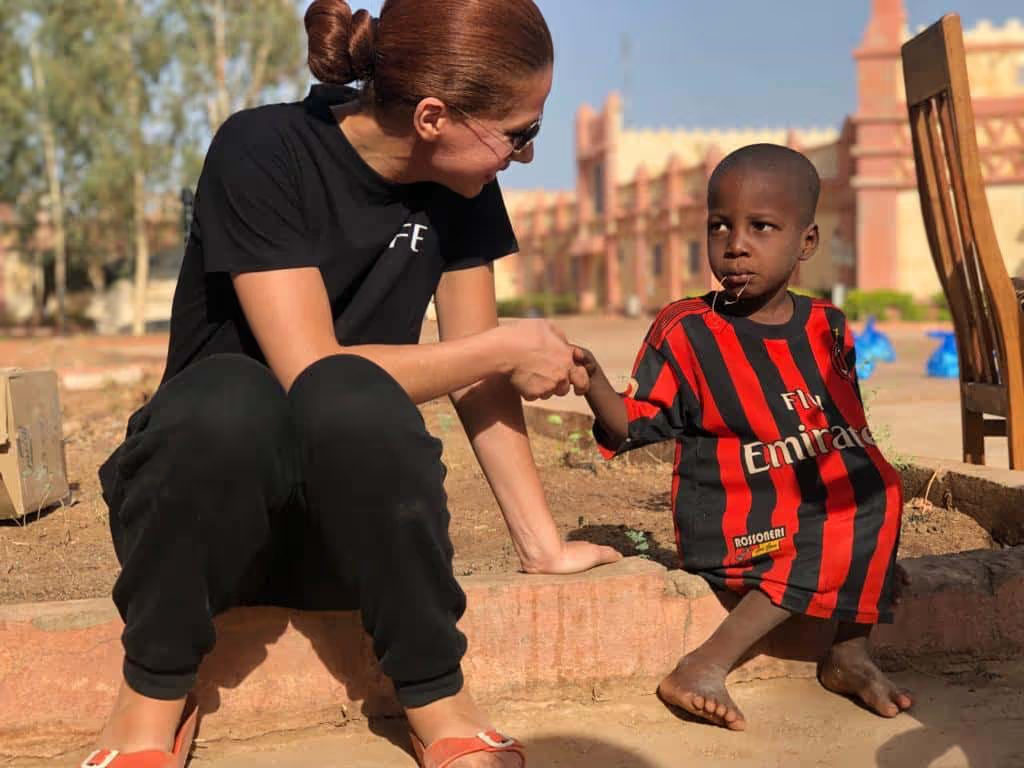The global migration crisis: causes, consequences and solutions

The migration crisis is one of the most pressing issues of our time! It is a complex issue with multiple causes and serious consequences. We can no longer close our eyes to the challenges that await us. To better understand the subject, let's dive into the depths of this crisis together. Let's explore its origins, its impacts. Let's also see what are the possible paths we can take. What are the ones that can lead us to a more human and sustainable future?
What are the causes of the migration crisis?
The global migration crisis is fuelled by a combination of factors. Among the main catalysts are armed conflicts, political and ethnic persecutions, and gross economic inequalities. Environmental disasters such as climate change and desertification are no exception, as well as food insecurity. According to the United Nations High Commissioner for Refugees 108.8 million people were uprooted as a result of war, conflicts or persecutions by the end of 2022! Millions of people are leaving their homes in the hope of finding safety, opportunities and dignity elsewhere.
Did you know that in 2023, more than half of the refugees came from Syria, Afghanistan and Ukraine?
What are the consequences of the migration crisis?
The consequences of this crisis are being deeply felt on a global scale. On the humanitarian front, we are facing a human tragedy. There are countless lives lost at sea, separated families and precarious living conditions in overcrowded refugee camps. Women, children, and the elderly are particularly vulnerable to abuse, exploitation, and violence on their journey to an uncertain future.
From an economic point of view, mass migration poses challenges for host countries in the European Union and elsewhere. They sometimes put a strain on their infrastructure and social services. While migrants can contribute to economic growth and cultural diversity, they often face discrimination in the labour market. They also often have limited access to essential services such as education and health care.
On the political front, the rise of anti-immigration movements is fuelling social tensions and polarization. It can even threaten the stability of democracies. Restrictive immigration policies and xenophobic discourse undermine the core values of tolerance, diversity and solidarity. They maintain a climate of fear and distrust.

Some examples of countries facing migration flows
We could name a large number of countries that are suffering the full brunt of the migration crisis. Let's focus on France, Greece, Italy, Italy, Germany, and Turkey. It illustrates the complex challenges that national governments and the European Union face in managing this problem, particularly in terms of security, humanitarian reception and international cooperation.
How is the migration crisis manifesting itself in France?
In France, there is significant pressure on reception infrastructures and asylum systems. Migrant camps in Calais, for example, have often been the focal point of this crisis, where thousands of people have tried to cross the Channel to reach the United Kingdom. The French authorities have faced logistical and humanitarian challenges to manage this vulnerable population while responding to the security and social concerns of local communities. Immigration management is more than ever a hot topic in France, with the recent adoption of the Law of 26 January 2024, aimed at better controlling immigration and strengthening integration.
What is the situation in Greece?
Greece is an important entry point into Europe for many migrants from the Middle East and Africa. The Greek islands in the Aegean Sea, such as Lesbos and Samos, have been considerably overloaded, with living conditions often disastrous in refugee camps. Efforts to deal with this massive influx of migrants have been hampered by the country's economic difficulties and political tensions within the European Union regarding the sharing of the migration burden.
And in Italy?
Italy has also been confronted (and still is) with significant migratory pressure, especially during peaks in the arrival of migrants from North Africa via the Mediterranean. The complicated situation on the island of Lampedusa has also received a lot of media attention. Sea rescue operations carried out by humanitarian organizations and Italian government ships to rescue migrants in distress have been and are numerous. However, the country has also been criticized for its policies for managing migration flows. This is particularly the case with its controversial agreements with Libya aimed at curbing the departure of migrants from the Libyan coast to Italy. Intensified in 2017, they were singled out by some human rights organizations, particularly because of the deplorable conditions in which migrants are detained in some Libyan centers.
How is Germany faring?
In Germany, the migration crisis has been a central topic in recent years, especially due to the country's generous refugee policy. In fact, in 2015, Germany has welcomed a significant number of asylum seekers, mainly from conflict zones in the Middle East, such as Syria and Iraq. In 2023, it had 2.5 million refugees.
Its migration policy has also been marked by intense debates on how to manage migration flows and how to balance humanitarian imperatives with national security and integration interests. These discussions led to legislative reforms on asylum and measures to speed up asylum procedures and to strengthen border controls.
Elsewhere? In Turkey for example
In Turkey, the migration crisis is also a major issue because of its proximity to areas of conflict and regional instability such as Syria and Iraq. It is the country that hosts the most refugees (on par with the Islamic Republic of Iran), almost the majority of whom are of Syrian origin. In border areas, in cities like Istanbul and Gaziantep, the population has increased significantly due to their influx. And despite efforts by the Turkish government and international organizations to provide humanitarian assistance and services to refugees, living conditions often remain precarious for many families.
In 2016, a controversial agreement was reached between the European Union (EU) and Turkey with the aim of reducing irregular migration flows to Europe. This agreement provides that Turkey, in coordination with Frontex, prevents the departure of migrants to the Greek islands in exchange for financial assistance from the EU and certain political concessions.

What are the solutions to the migration crisis?
Faced with this complex and devastating crisis, it is imperative to adopt an inclusive and comprehensive approach to develop effective solutions. Here are some ideas for thought:
Preventing the causes
Investing in the prevention of conflicts, the promotion of social justice and Of human rights, as well as the fight against climate change and poverty are key elements in mitigating forced migration flows in the long term. By addressing the root causes of the crisis, we can create conditions conducive to peace, prosperity and security for all.
Strengthening international cooperation
Collaboration between nations is essential to manage migration in a safe, orderly, and regular manner. This requires increased commitment to existing international agreements such as the UN Refugee Convention and the UN Convention on the Rights of the Child. It is also necessary to motivate the development of new regional cooperation initiatives. By promoting dialogue and coordination between governments, international organizations, international organizations, civil society and the private sector, we can find sustainable and equitable solutions to the migration crisis.
Promoting integration and inclusion
Effective integration policies that promote equal opportunities, cultural diversity and social inclusion are crucial to ensure the well-being of migrants. By investing in education, vocational training and social integration programs, we can help migrants integrate fully into their new community, thus contributing to the economic and cultural dynamism of society.
Protecting the rights of migrants
It is imperative to ensure that the fundamental rights of migrants, including the right to life, safety and dignity, are respected and protected throughout their migration journey. This means ending arbitrary detention, human trafficking, and all forms of discrimination based on race, religion, gender, or sexual orientation. By adopting a human rights-based approach, we can create a safe and inclusive environment for all migrants, where their voices are heard and their contributions valued.
At LIFE, we help refugees in several countries, in Somalia or Lebanon for example. Through our food aid program 1 euro = 1 meal, we give them a little bit of comfort and hope on a daily basis.

Investing in sustainable development
Finally, it is essential to adopt a sustainable development approach that contributes to the fight against economic and social inequalities in both countries of origin and destination. This creates opportunities for all and reduces incentives for forced emigration. This includes investing in basic infrastructure, public services, sustainable agriculture, and job creation programs in order to promote inclusive and equitable economic growth for all citizens.
Our NGO LIFE works to empower local populations. En building drinking water wells, but also by planting “economic” trees or by participating in the establishment of agroforestry systems with our actions HIS SHOOT.

Europe is facing a migration crisis of unprecedented scale, where the incessant flows of refugees and asylum seekers are putting a strain on the union and solidarity between its member states. European borders have become critical points of tension, where a fragile balance is at stake between humanitarian reception and migratory pressure. Despite efforts to establish a common European code on asylum and migration, disparities between national policies persist, exacerbating the logistical and social challenges facing the European Union. However, hope lies in the imminent signing of a new Pact on Migration and Asylum before summer 2024.



.avif)




.avif)
.avif)